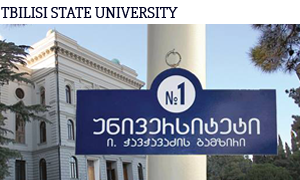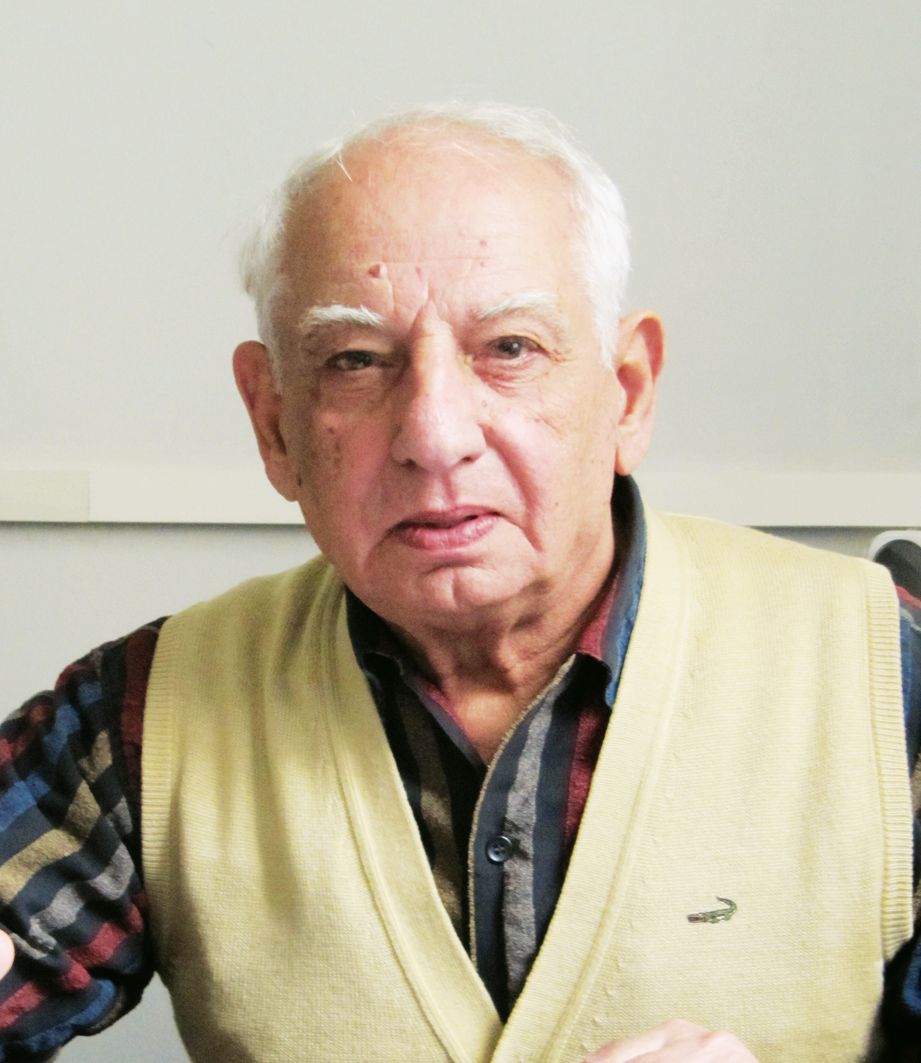
FACULTY OF EXACT AND NATURAL SCIENCES
Laser Thermonuclear Synthesis
In the light of limited natural energy resources physicists believe today that it is vitally important to consider generating electricity using controlled thermonuclear synthesis. To study thermonuclear synthesis, which is the same type of energy that makes sunshine, it is essential to study the features of plasma.
Professor Nodar Tsintsadze, Full Professor of the Subdivision of Plasma Physics at the Physics Department of the TSU Faculty of Exact and Natural Sciences since 1960, and Academician, points out that the USA, Japan, China, Russia and the European Union are financing research into laser thermonuclear synthesis as an alternative energy source. Since 2010, the European Union has been planning the construction of powerful equipment called HiPER (High Power Laser Energy Research Facility) which will produce high temperature plasma to enable favorable thermonuclear reactions.

Lawrence Livermore National Laboratory (USA). Termonuclear laser equipment in operation. By applying 192 ultraviolet laser beams, 500 trillion megawatts of energy are focused in one spot.
Plasma is the fourth and most natural state of matter, and created from a combination of electron-ions. Stars and the interstellar rarefied atmosphere are composed of plasma, amounting to 99.9% of the visible universe. Today nuclear power stations work to produce heavy elements instead of to synthesize, while energy obtained from heavy elements is much less than that obtained by the synthesis of hydrogen. If scientists succeed in creating controlled thermonuclear synthesis it will be feasible to obtain and convert this strongest type of thermal energy into electricity.
The Institute established the Department of Plasma Physics in 1960, and the Institute of Elevter Andronikashvili began working on this issue in 1970, while the world’s physicists began to research laser thermonuclear reactions only in the 1980s. In the 1970s when there were no prospects of creating powerful lasers, research undertaken by Dr. Tsintsadze and his team gave Georgian physicists a lead in the world of physics. The work cycle of plasma relativism played a key role in both in theoretical and experimental physics. In 1970, Dr. Tsintsadze published his research, presented at the IV European Conference on Controlled Fusion and Plasma Physics in Rome.
The TSU physicists continued to explore this newly established theory and were the first to predict that during the interaction of strong relativistic electromagnetic waves with dense plasma, while the plasma is heating, it is possible to form solitary waves, and that these waves might be formed when there is a density increase in the field containment area (VII European Conf. on Controlled Fusion and Plasma Physics, Lausanne, 1975). Georgian physicists presented other scientific research, proposing new physics at the nternational Conf. on plasma theory, Kiev (1974), i.e. an explanation of how super powerful radiation squeezes the plasma with the form of a laser beam.

picture 2. Schematic depiction of controllable thermonuclear laser reaction.
Dr. Tsintsadze thus studied the effects of super powerful relativistic (similar to the speed of light) radiation on plasma. The research explains how plasma changes and acts as a result of powerful radiation if there are any solitary waves inside the plasma.
Professors of the of the Institute of Physics, L. Tskhakaia, V. Berezhiani, L. Tsintsadze, L. Shatashvili, D. Garuchava and others, have also received international recognition. After his 1970 research, Dr. Tsintsadze was invited to the USA, Japan and European countries as his work had already been widely studied and discussed. Based on his research, other research was carried out in universities like Princeton, Berkeley, Cornell and Los Angeles. During his visit to the University of Los Angeles, with the famous scientists J. F. Drake and Y. C. Lee, Dr. Tsintsadze authored two articles that were published in prestigious journals (Phys. Rev. Lett. 36,31(1976) and 36,196 (1976). Dr. Tsintsadzewas also able to collaborate with the world-famous physicist, K. Nishikawa, while working on these articles.

picture 3. Soliton model in solid realtivistic plasma.
N. Tsintsadze’s scientific articles discussing the effects of relativistic intensity radiation on plasma have been discussed in many key journals and at international conferences. The authors of two articles identified the huge importance of Dr. Tsintsadze’s theory, and cite his work, writing “we start from Tsintsadze’s theory…”
References
The article “Relativistic Nonlinear Effects in Plasmas’’ appeared in J. Physics Reports (Volume 138, 1-149 (1986) with a citation index of 375.
According to the same data, the article “On Theory Of Electrosound Waves in Plasma’’ Phys. JETP 45, 252 (1977) had an index of 75.
Dr. NodarTsintsadze’s works were cited in American journals such as Physics of Plasmas (5, 376 (1998); S. Guerin, P. Mora and G. Havel) and Physical Review A (13,887; A. Bourdir et al.).
‘The Theory of Parametric Events caused by Relativistic Oscillation of Electron Masses’’ (N.L. Tsintsadze, JETP 32,684 (1971)




